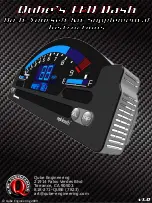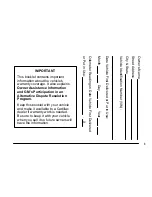
Remove the tire and wheel. Refer to
Tire and Wheel Removal and Installation
.
1.
Inflate the tire to the manufactures specified pressure as stated on the tire.
2.
Submerge the tire/wheel into a water bath in order to locate the leak.
3.
Inscribe a mark on the wheel in order to indicate the leak areas.
4.
Inscribe a mark on the tire at the valve stem in order to indicate the orientation of the tire to the wheel.
5.
Remove the tire from the wheel. Refer to
Tire Dismounting and Mounting
.
6.
Note:
Do not damage the exterior surface of the wheel.
Use number 80 grit sandpaper to scuff the inside of the rim surface at the leak area.
7.
Use general purpose cleaner to clean the leak area.
8.
Apply 3 mm (0.12 in) thick layer of adhesive/sealant to the leak area. Refer to
Adhesives, Fluids, Lubricants, and Sealers
.
9.
Allow for the adhesive/sealant to dry.
10.
Align the inscribed mark on the tire with the valve stem on the wheel.
11.
Install the tire to the wheel. Refer to
Tire Dismounting and Mounting
.
12.
Pressurize the tire to 276 kPa (40 psi).
13.
Submerge the tire/wheel into a water bath in order ensure the leak is sealed.
14.
Inflate the tire to the specified pressure as stated on the tire placard.
15.
Balance the tire and wheel. Refer to
T
ire and Wheel Assembly Balancing - Off Vehicle.
16.
Install the tire and wheel. Refer to
Tire and Wheel Removal and Installation
.
17.
Tyre and Wheels
SUSPENSION
S e c tion 10
BACK TO CHAPTER INDEX
CHEVROLET CRUZE BODY REPAIR MANUAL 2010
TO MODEL INDEX
















































